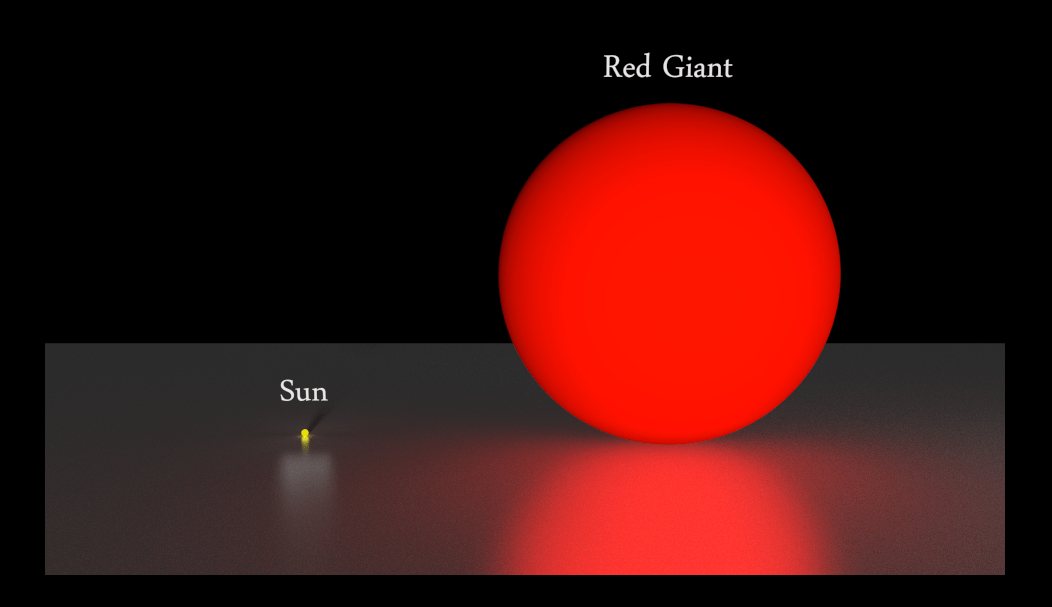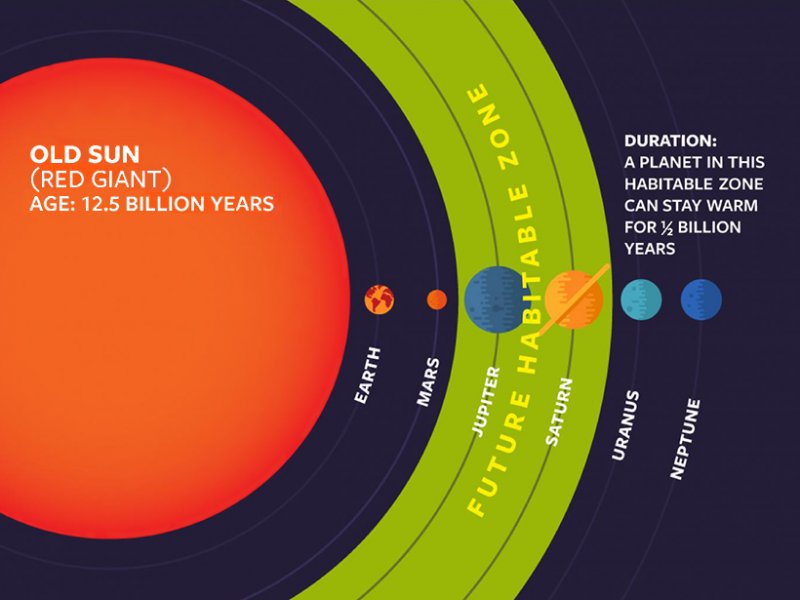
Life After (Near) Death
A red giant forms after a star has burned through its hydrogen fuel. The inward pressure of gravity will contract the star, and its internal pressure will allow helium to fuse into heavier elements like carbon. The higher core temperatures will cause the star to expand like a hot balloon, possibly to more than 200 times its current size.
When this happens to our own Sun, Earth will be bombarded by solar radiation of such great intensity that the liquid water of the oceans and seas will be boiled away. Not only this, the atmosphere of the entire planet will be burnt away, leaving the planet exposed to deep space.
During even the earliest stages of the red giant phase, scientists assert that life will die on Earth. As our red giant star continues its expansion, it will devour Mercury and Venus. In the final stage of the red giant expansion, the Earth will be pulled into a 200-year decreasing spiral orbit, which will destroy the planet as it descended through the layers of the red giant sun
It’s the end of Earth. But not of life.

Expanding Horizons
The hottest trend right now in astronomy: spotting exoplanets. Astronomers eager to answer the question of whether we are alone in the universe are trying to spot rocky planets that are in the “Goldilocks Zone”—where conditions are conducive to supporting life. Most probes, satellites, and ground telescopes are currently peering toward the stars for this very reason. And now they may have to cast a wider net.
Astronomers from Cornell University have found that red giants, previously ruled out for supporting life, may have their own habitable zones, and may support their own versions of life.
New Hope For Life
In the study, published in the Astrophysical Journal, Ramses Ramirez and his team put forward a model where the a red giant may give enough heat and light to a specific zone in its system, and the zone may exist long enough for life to form and flourish.
Moons that orbit Jupiter and Saturn, which receive about 1/25 and 1/90 the Sun’s energy, respectively, will suddenly be in a habitable zone. And they will stay there for 200 million to 9 billion years. Life was able to evolve on Earth in 500–700 million years. Do the math…that could make for some serious longevity.

These new findings also mean that scientists might widen the search for exoplanets. Older stars will get a second look from astronomers, who will be checking not only for water but also gases such as oxygen, methane, and carbon dioxide, which indicate the presence of an atmosphere.
So when our Sun Finally dies, if we have to look beyond our solar system, they may be our best chance of finding another habitable Earth-like planet.